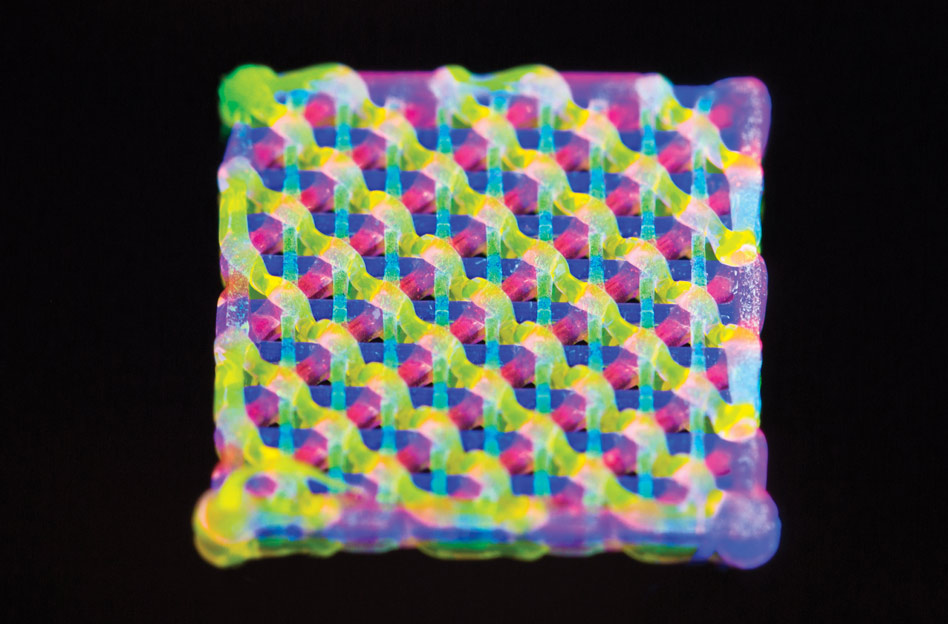Harvard’s Jennifer Lewis has developed a technique for 3D printing a wide variety of materials at micro-scale dimensions.
Lewis’ Harvard team has created “inks” made from both biological and non-biological materials that can be successfully extruded in very small dimensions. The technology is also able to mix these materials in different ways. Imagine, for example, the complexity of 3D printing human tissue: it’s made of many different components and structures, not the least of which must be a network of blood vessels. The new technology is capable of 3D printing such structures.
Extrusion is accomplished by isolating the required living cells and mixing them with a matrix that holds them in place and enables reliable extrusion. One key property is that all the inks currently developed by the project are extrudable at room temperatures.
The 3D printing process is capable of printing features as small as one micron (0.001 mm) but can print objects as large as 1 x 1 meters. To do so a special extruder with multiple heads (64 or 128) is used.
This is still research, but we’re excited to see 3D printing beginning to move beyond the world of “one material” into a much grander scenario, where many more kinds of objects can be printed on demand.


